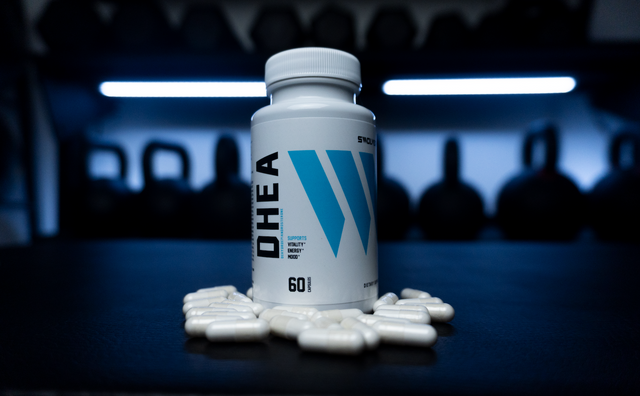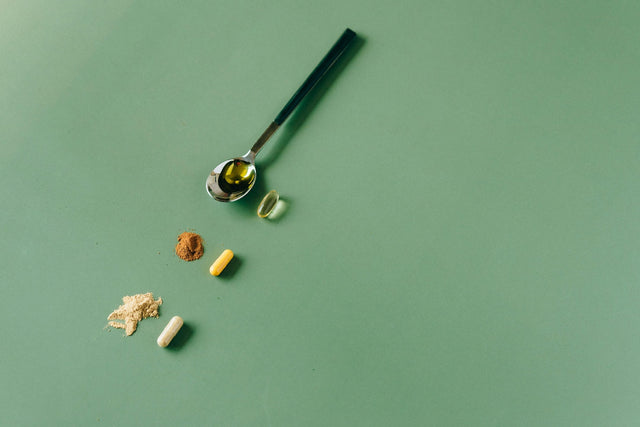In the quest for optimal fitness and hormonal balance, understanding the aromatization of testosterone is vital. This complex process, where testosterone transforms into estrogen, plays a significant role in both men and women. Many fitness enthusiasts may overlook this hormonal interplay, yet it can profoundly influence your muscle growth, energy levels, and overall well-being.
Whether you're a bodybuilder looking to maximize gains or someone striving for better health, grasping how aromatization works and its effects on your body can be transformative. Navigating the nuances of hormonal balance may seem daunting, but arming yourself with knowledge about testosterone and its aromatic counterpart can empower you to achieve your fitness goals more effectively. J
Join us as we delve into the science behind aromatization, helping you make informed decisions that align with your aspirations and lifestyle. Unlocking this crucial aspect of your hormonal health might just be the key to reaching new heights in your fitness journey.
What Is Aromatization?
Understanding Hormonal Balance, Testosterone, and Estrogen Conversion
What Is Aromatization?
Aromatization is a biochemical process where the enzyme aromatase converts testosterone into estrogen. This enzymatic action is a natural part of the body’s hormonal regulation mechanism, playing a crucial role in maintaining a balance between androgens (male hormones) and estrogens (female hormones). While testosterone is predominantly known as a male hormone, it is also present and essential in females, albeit in smaller quantities. Similarly, estrogen, often considered a female hormone, is crucial for males as well. The balance and conversion between these hormones are vital for numerous physiological processes (Simpson & Davis, 2001).
In both men and women, aromatization primarily occurs in adipose tissue, the liver, and the gonads. The presence of the aromatase enzyme (CYP19A1) in these tissues facilitates the conversion of testosterone into estradiol, a potent form of estrogen. This conversion process is essential for regulating various bodily functions, including reproductive health, bone density, and even cognitive abilities (Labrie, 2015). Without aromatization, the body would struggle to maintain the hormonal equilibrium necessary for these critical functions.
Why Aromatization Matters in Fitness and Health
Understanding the significance of aromatization extends beyond mere academic interest. For individuals invested in their fitness, physique goals, or overall health, recognizing how this process influences the body can be transformative. Hormonal imbalances—such as excessive aromatization or suppressed estrogen—can lead to issues like:
-
Impaired muscle growth
-
Increased fat retention
-
Decreased libido
-
Mood fluctuations and energy loss
Gaining insight into how aromatization works and how it impacts hormonal balance can empower you to make more informed decisions about your health strategies, particularly when using performance-enhancing substances, managing body fat levels, or navigating age-related hormonal shifts (Gruber et al., 2002).
The Role of Testosterone in the Body
Testosterone is a steroid hormone that plays a pivotal role in the development and maintenance of male characteristics. It is produced primarily in the testes in men and in smaller amounts in the ovaries in women. The adrenal glands also contribute to testosterone production in both sexes.
In men, testosterone promotes:
-
Development of male reproductive tissues such as the testes and prostate
-
Secondary sexual characteristics like muscle mass, bone density, and body hair
-
Sperm production and sexual performance
In women, testosterone supports:
-
Libido
-
Muscle strength
-
Bone mineral density
Beyond its role in development, testosterone plays a critical role in overall health and well-being. It influences mood, energy levels, and even cognitive functions (Zarrouf et al., 2009). Adequate levels of testosterone are associated with a sense of vitality, while deficiencies can contribute to fatigue, depression, and loss of motivation.
Testosterone and Metabolic Health
Testosterone also plays a key role in metabolic regulation. It supports:
-
Fat distribution
-
Insulin sensitivity
-
Red blood cell production
Optimal testosterone levels have been linked to a lower risk of developing obesity, type 2 diabetes, and cardiovascular disease (Grossmann, 2011). For those engaged in strength training or athletics, maintaining hormonal balance helps preserve lean muscle mass, enhance recovery, and support long-term body composition goals.
How Aromatization Occurs
The Mechanisms and Factors Behind Estrogen Conversion
The Biochemical Process of Aromatization
Aromatization occurs through the enzymatic activity of aromatase (CYP19A1), which is present in various tissues including adipose tissue, the liver, and the gonads. Aromatase catalyzes the conversion of androgens like testosterone into estrogens, specifically estradiol. This reaction involves the removal of the A-ring from the androgen molecule and the introduction of an aromatic ring, which is where the process gets its name—“aromatization.”
This conversion is not just a chemical shift; it's a crucial hormonal regulatory mechanism. It helps maintain the balance between androgens and estrogens, both of which play vital roles in male and female physiology (Simpson et al., 2002).
What Influences the Rate of Aromatization?
The rate of aromatization varies widely depending on several internal and external factors:
-
Aromatase expression levels in tissues
-
Amount of testosterone available for conversion
-
Genetic variations in aromatase gene expression (CYP19A1 polymorphisms)
Individuals with elevated aromatase activity may convert more testosterone to estrogen, leading to elevated circulating estrogen levels. This phenomenon is common in people with:
-
Higher body fat percentages (more adipose tissue = more aromatase)
-
Advancing age
-
Poor lifestyle habits
For instance, increased body fat is strongly associated with enhanced aromatase activity, contributing to elevated estrogen levels in both men and women (Cleland et al., 1985).
Hormonal Regulation of Aromatase Activity
The aromatization process is not passive—it is highly regulated by other hormones and physiological signals:
-
Insulin can stimulate aromatase activity (Campbell & Febbraio, 2001)
-
Inflammation and oxidative stress may further elevate aromatase expression
-
Cytokines like IL-6 have also been shown to upregulate aromatase in adipose tissue
This means lifestyle choices that affect inflammation or insulin sensitivity can either promote or reduce aromatization.
Factors Influencing Aromatization Rates
Genetics, Age, Body Composition, and Lifestyle
Genetic Variability
Genetics play a significant role in aromatization. Polymorphisms in the CYP19A1 gene can result in higher or lower enzyme activity, influencing how much estrogen is produced from testosterone. Some people are simply predisposed to higher aromatase activity, impacting muscle growth, fat storage, and hormonal balance (Kristensen et al., 2000).
Aging and Hormonal Shifts
As individuals age, aromatase activity often increases. In men, this can lead to higher estrogen levels and a natural decline in testosterone, potentially contributing to:
-
Gynecomastia
-
Increased abdominal fat
-
Higher cardiovascular risk
In women, especially during perimenopause and menopause, aromatization can influence estrogen dominance, impacting mood, libido, and bone density (Vermeulen, 2001).
Body Fat and Estrogen Production
Adipose tissue is rich in aromatase, making body fat percentage a major determinant of aromatization rates. Increased fat stores, especially visceral fat, raise the likelihood of estrogen dominance in men and women. This can impair testosterone production and lead to metabolic disorders such as:
-
Insulin resistance
-
Type 2 diabetes
-
Metabolic syndrome
Regular exercise and a clean diet can help manage this hormonal balance, while excess alcohol consumption, poor sleep, and chronic stress may elevate aromatase levels.
Effects of Aromatization on Hormonal Balance
Physical, Psychological, and Health Implications
In Men: Suppressed Testosterone, Elevated Estrogen
Excess aromatization can disrupt the delicate testosterone-to-estrogen ratio, leading to a negative feedback loop where elevated estrogen suppresses natural testosterone production. Symptoms of hormonal imbalance in men include:
-
Reduced libido
-
Erectile dysfunction
-
Loss of muscle mass
-
Fat gain (especially chest and abdominal areas)
These effects can significantly impair quality of life, physical performance, and emotional well-being (Tenover, 1992).
In Women: Estrogen Imbalance and Menopausal Challenges
For women, aromatization supports healthy estrogen levels, but excessive conversion can exacerbate:
-
PMS and menopausal symptoms
-
Mood swings
-
Weight gain
-
Higher osteoporosis and cardiovascular risk
Understanding how lifestyle and hormonal therapies may influence aromatization can guide better health decisions, particularly during hormonal transition phases (Nelson, 2008).
Mental Health Considerations
Psychological effects of high estrogen or low testosterone levels include:
-
Mood instability
-
Depression
-
Anxiety
-
Irritability
These symptoms can affect daily function and compound physical health issues. A holistic approach to hormone regulation—including lifestyle modification, nutrition, and stress management—can help mitigate these effects.
Impact of Aromatization on Fitness Goals
How Estrogen Conversion Affects Muscle Growth, Fat Loss, and Performance
Aromatization and Muscle Building
The impact of aromatization on fitness goals is substantial, especially for those focused on muscle hypertrophy, fat loss, and peak athletic performance. For individuals engaged in resistance training, bodybuilding, or competitive sports, maintaining optimal testosterone levels is crucial. Testosterone stimulates muscle protein synthesis, boosts strength output, and supports exercise recovery (Kvorning et al., 2006).
When aromatization is excessive, elevated estrogen levels may:
-
Inhibit lean muscle development
-
Promote fat accumulation, particularly in the abdomen and thighs
-
Decrease strength and power output
-
Slow recovery between workouts
Estrogen’s role in lipid storage and fluid retention means that high levels may cause athletes to look softer or more bloated, even with rigorous training and a clean diet.
Testosterone-to-Estrogen Ratio and Performance
A well-balanced testosterone-to-estrogen ratio is essential for both men and women striving toward fitness goals. While testosterone drives energy, endurance, and muscle retention, excessive estrogen can create obstacles such as:
-
Water retention
-
Fatigue
-
Mood swings
-
Decreased training intensity
These changes can impair motivation and physical results, making aromatization management a key component of hormonal health in fitness programming (Handelsman, 2017).
Estrogen’s Benefits in Moderation
It’s important to recognize that estrogen is not the enemy. While excess levels may be problematic, adequate estrogen is essential for:
-
Joint health and lubrication
-
Cardiovascular protection
-
Bone density maintenance
In both sexes, estrogen supports connective tissue resilience, which reduces injury risk during high-intensity exercise or weight training (Torres et al., 2021). Estrogen also plays a protective role in cholesterol management and vascular health by improving HDL levels and decreasing LDL cholesterol.
Symptoms of High Aromatization
Warning Signs of Hormonal Imbalance You Shouldn’t Ignore
In Men: Estrogen-Driven Changes
When testosterone is excessively converted to estrogen, men may experience:
-
Gynecomastia (breast tissue development)
-
Reduced libido and erectile dysfunction
-
Loss of lean muscle
-
Mood swings and irritability
-
Increased abdominal fat and water retention
Gynecomastia is one of the most visible signs and often the most psychologically distressing. These symptoms indicate a disruption in hormonal balance and often correlate with reduced performance and well-being (de Ronde & de Jong, 2011).
In Women: Estrogen Dominance Symptoms
In women, high aromatization may lead to symptoms often attributed to estrogen dominance, including:
-
Irregular or heavy menstrual cycles
-
Unexplained weight gain
-
Mood swings and emotional volatility
-
Fatigue and low energy
-
Increased risk of PCOS or endometriosis
Estrogen dominance can worsen PMS symptoms, cause water retention, and increase susceptibility to metabolic disorders (Goodman et al., 2015).
Subtle Yet Important Signs
Both men and women may experience subtle signs of high aromatization, such as:
-
Slower recovery after workouts
-
Reduced motivation and drive
-
Plateaued progress despite training
-
Changes in fat distribution (more midsection storage)
Because these symptoms can be attributed to other factors (stress, diet, overtraining), they’re often overlooked. However, recognizing these early warning signs and evaluating hormonal markers through blood work or medical consultation can help you intervene before more serious issues arise.
Strategies to Manage Aromatization
Lifestyle, Nutrition, and ZMT-Supported Approaches to Regulate Estrogen Conversion
Reduce Excess Body Fat
One of the most effective strategies for managing aromatization is to reduce excess body fat. Since adipose tissue contains high levels of aromatase, individuals with higher body fat percentages tend to convert more testosterone into estrogen. Losing fat—especially visceral fat—can lower estrogen levels and improve the testosterone-to-estrogen ratio (Cleland et al., 1985).
Incorporating resistance training, high-intensity interval training (HIIT), and daily movement can help burn fat, build lean muscle, and naturally support hormone balance.
Eat to Support Hormone Health
Your diet plays a vital role in testosterone production and aromatization control. Focus on a whole food-based diet rich in micronutrients and fiber. Here’s how:
-
Cruciferous vegetables like broccoli, cauliflower, and Brussels sprouts contain DIM (Diindolylmethane) and indole-3-carbinol, compounds that support estrogen detoxification (Michnovicz et al., 1991).
-
Zinc-rich foods like oysters, red meat, pumpkin seeds, and lentils promote natural testosterone production.
-
Magnesium and vitamin D, found in foods like leafy greens, fatty fish, and egg yolks, are associated with higher testosterone levels.
-
Reduce alcohol and processed foods, which can increase aromatase activity and suppress natural testosterone production.
Pro Tip: Incorporate hormone-supportive supplements like ZMT by Swolverine — an all-in-one nighttime testosterone booster that includes clinically dosed zinc, magnesium, fenugreek, vitamin B6, and ashwagandha, to help increase free testosterone levels, reduce cortisol, and improve sleep quality.
Natural Ways to Boost Testosterone
In addition to lifestyle and dietary strategies, these science-backed natural methods can further support testosterone levels and reduce aromatization:
-
Sleep 7–9 hours per night – Poor sleep lowers testosterone and increases cortisol, which contributes to aromatization (Leproult & Van Cauter, 2011).
-
Reduce chronic stress – Cortisol inhibits testosterone production; manage stress through breathwork, meditation, or light cardio.
-
Limit exposure to endocrine disruptors – Avoid plastics, fragrances, and certain personal care products that contain estrogen-mimicking chemicals like BPA and phthalates.
-
Supplement smart – Use a nighttime testosterone support product like ZMT to enhance your body’s natural hormonal rhythms and recovery.
Medical Interventions (When Necessary)
For more serious hormonal imbalances, aromatase inhibitors (AIs) may be prescribed to reduce estrogen production. These are typically used in cases like gynecomastia, testosterone replacement therapy (TRT) management, or breast cancer treatment. These medications should always be used under medical supervision due to potential side effects like bone loss or fatigue (Mauras et al., 2000).
The Importance of Monitoring Hormone Levels
Track and Tune Your Hormones for Optimal Results
Get Regular Blood Tests
To ensure your strategy is working, get routine blood work to check:
-
Total and free testosterone
-
Estradiol (E2)
-
SHBG (Sex hormone-binding globulin)
-
LH and FSH (to assess pituitary function)
Regular labs provide objective feedback and allow you and your provider to fine-tune your training, diet, and supplementation strategy.
Address Root Causes of Imbalance
If aromatization is high, consider evaluating for:
-
Insulin resistance
-
Hypothyroidism
-
Chronic inflammation
-
Nutrient deficiencies
These conditions can all disrupt hormone production and should be addressed holistically.
Listen to Your Body
Stay in tune with signs like:
-
Fatigue or poor sleep
-
Low libido or motivation
-
Mood changes or brain fog
-
Muscle loss or stubborn belly fat
Track symptoms in a journal or health app to catch early warning signs of imbalance and adjust before more serious issues arise.
Conclusion: Balancing Testosterone for Optimal Health and Performance
Balancing testosterone for optimal health and performance involves understanding the complex interplay between testosterone and estrogen and the role of aromatization in this process. By recognizing the factors that influence aromatization rates, such as genetics, age, body composition, and lifestyle choices, you can take proactive steps to manage your hormonal health. Implementing strategies such as maintaining a healthy body weight, following a balanced diet, and incorporating regular exercise can help support hormonal balance and optimize your fitness outcomes.
Monitoring hormone levels and recognizing the symptoms of high aromatization are essential for addressing hormonal imbalances early and preventing more severe health issues. Working with a healthcare provider to track your hormone levels and identify any underlying health conditions can provide valuable insights and help you take a more comprehensive approach to managing your hormonal health. By staying informed and proactive, you can make more informed decisions about your health and fitness strategies, ultimately achieving your goals more effectively.
Understanding the aromatization of testosterone and its impact on hormonal balance and fitness goals is crucial for anyone looking to optimize their health and performance. By gaining a deeper understanding of this process and implementing strategies to manage it effectively, you can unlock new levels of health, vitality, and physical performance. Whether you are a bodybuilder striving for muscle gains or someone seeking better overall health, balancing testosterone through informed decision-making and proactive management can help you achieve your aspirations and live a healthier, more fulfilling life.







